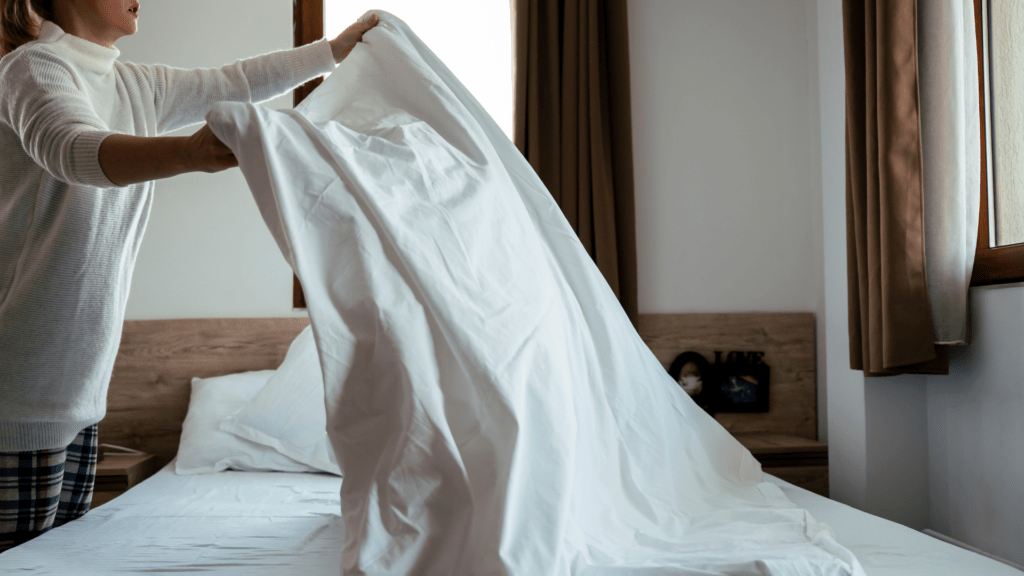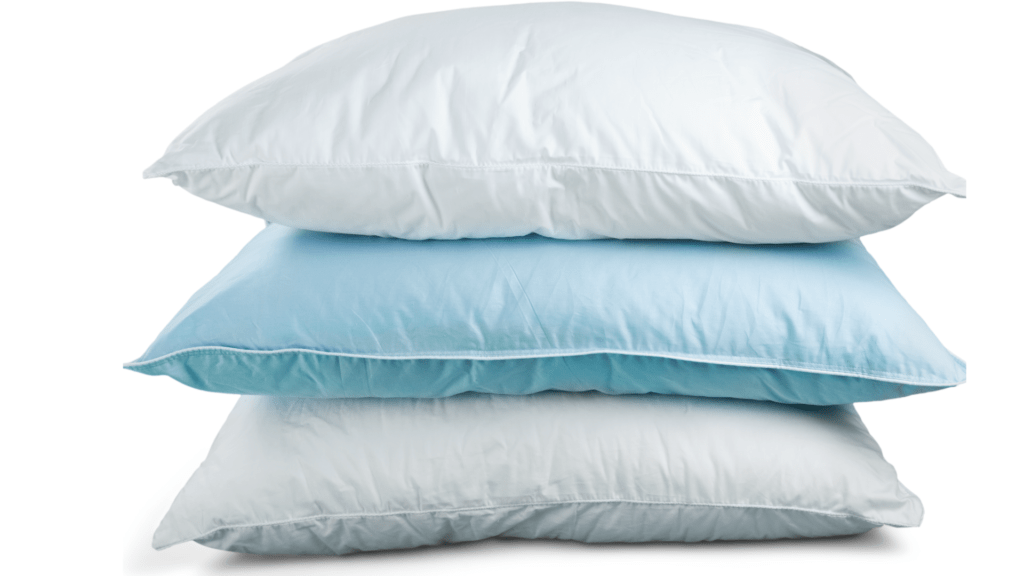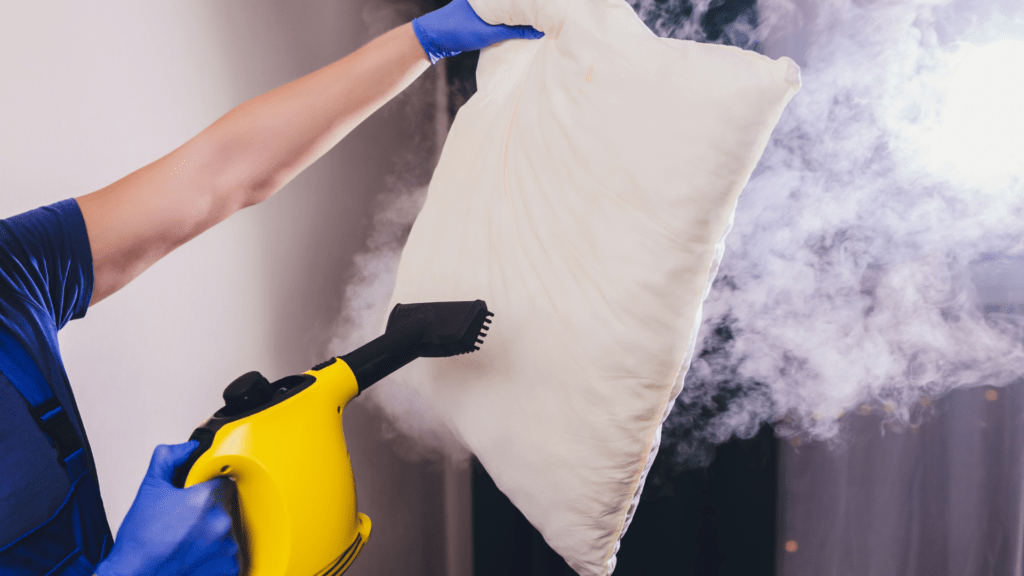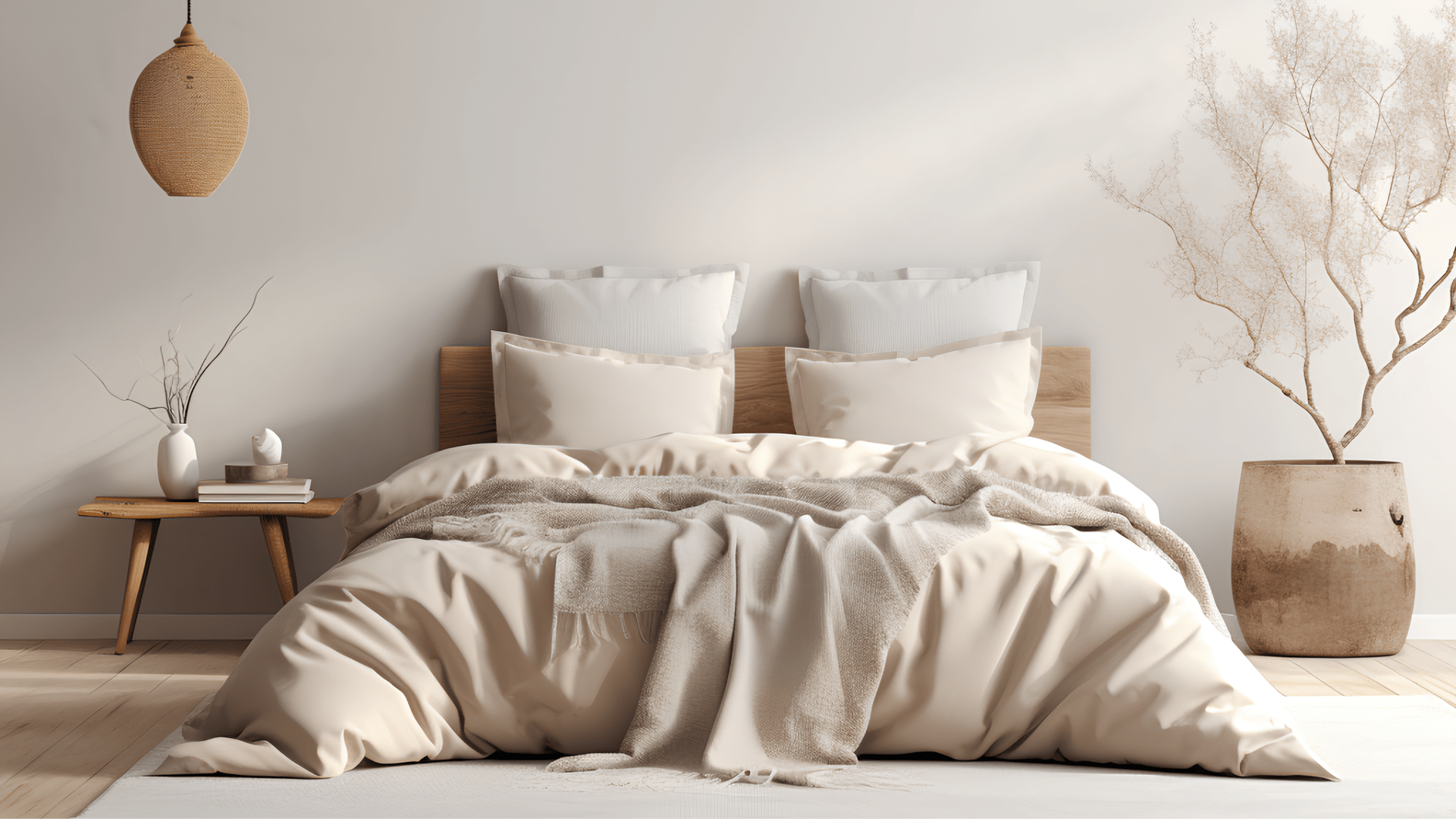When it comes to washing sheets and throw pillows, there’s a common misconception that these tasks are complicated, especially when you need to wash throw pillows without removable covers. But the truth is, keeping your bedding fresh and clean doesn’t have to be difficult or time-consuming. With the right tips and a bit of know-how, you can easily tackle this task and ensure your bedding stays hygienic and inviting.

Let’s face it—clean sheets and throw pillows can make a world of difference in your sleep quality and overall comfort. Regularly washing these items helps remove sweat, oils, dead skin cells, and other debris that accumulate over time. Not only does this keep your bedding smelling fresh, but it also reduces allergens and prevents the growth of bacteria and dust mites.
But why do some people still hesitate to clean their sheets and pillows as often as they should? The answer is simple: many people aren’t sure of the best way to wash sheets or whether it’s even possible to wash throw pillows. The good news is, with a little guidance on how to wash bedding, you can handle these tasks with ease and ensure everything stays fresh and clean.
How to Wash Sheets: The Complete Guide
Washing sheets might seem straightforward, but there are a few tricks to ensure you’re doing it right. Whether you’re wondering how to wash bed sheets properly or just looking for the best way to handle them, this guide has you covered.
Best Way to Wash Sheets
First things first—what’s the best way to wash sheets? Start by checking the care label on your sheets. This label gives you crucial information, like the recommended water temperature and whether your sheets can be tumble-dried. Most sheets can be washed in a washing machine on a normal cycle, but if you’re dealing with more delicate fabrics, like silk or linen, you’ll want to use the delicate cycle.
Set your washing machine to a warm or hot water setting, as hot water helps to kill any lingering germs and bacteria. Add a gentle detergent, preferably one free from harsh chemicals that can break down the fabric over time. If you’re washing white sheets, feel free to add a bit of baking soda or a whitening agent to keep them bright. For the best results on how to clean bed sheets, make sure to follow these steps to maintain their cleanliness and longevity.
It’s also important to avoid overloading your washing machine. Giving your sheets plenty of room to move around allows the water and detergent to clean them more effectively. And if you’ve ever wondered, “Can I wash sheets with clothes?”—it’s best not to. Washing sheets with clothes can lead to uneven cleaning and increased wear and tear on both the sheets and your clothes. Similarly, when you learn how to wash bed sheets in a washing machine, make sure to give them enough space, and do the same when washing throw pillows without removable covers, to ensure a thorough cleaning.
Tips on Washing Bedding
Now, let’s talk about the specifics of washing bedding. A common question is whether you can wash sheets and blankets together. The answer? Yes, you can, but there are a few things to keep in mind. If you’re washing a bulky comforter with your sheets, make sure your washing machine has enough capacity to handle the load. Overcrowding the machine can lead to poor cleaning results and increased wear on your bedding.

Another question people often ask is, “Can you wash comforters with sheets?” While you technically can, it’s not always the best idea. Comforters are usually much heavier than sheets, and this weight difference can cause the sheets to not get fully cleaned. If you have the option, wash your comforter separately, or at least make sure the load is balanced.
When it comes to drying, make sure to follow the care label instructions closely. Most sheets can be tumble-dried on a low to medium heat setting. Over-drying can cause the fabric to become stiff and wear out faster, so it’s best to remove them from the dryer while they’re still slightly damp and let them air dry the rest of the way. Similarly, when you wash throw pillows without removable covers, it’s important to dry them carefully to avoid damage and maintain their shape.
In summary, washing your sheets doesn’t have to be complicated. By following these simple tips, you can keep your bedding fresh, clean, and ready for a good night’s sleep.
How to Wash Throw Pillows Without Removable Covers
There’s a common belief that throw pillows without removable covers are impossible to clean, but that’s not the case at all. You might be wondering, “Can you wash throw pillows without ruining them?” The answer is yes! With a little care, you can keep your throw pillows fresh and clean, even if they don’t have a removable cover.
Can You Wash Throw Pillows?
Let’s clear up the confusion: Yes, you can wash throw pillows, even those without a removable cover. Many people think these pillows are destined to stay dirty because they can’t be thrown in the washing machine, but that’s simply not true. Whether you’re dealing with couch pillows, decorative pillows, or any other type of throw pillow, there are methods to clean them effectively.
Throw pillows can accumulate dust, sweat, and even pet hair, making them a prime candidate for regular cleaning. But before you toss them in the washer, it’s important to know the best approach depending on the pillow’s material and stuffing. For example, while most synthetic and down-filled pillows can handle machine washing, if you need to wash throw pillows without removable covers, some delicate or vintage pillows might require hand washing to maintain their shape and texture.
Step-by-Step Guide to Cleaning Throw Pillows
Washing throw pillows might seem tricky, but it’s pretty straightforward when you follow these steps. Here’s how to get your pillows looking and smelling fresh again:
Preparing Your Pillows
Before you start washing, always check the care label on your throw pillows. This label will tell you the safest cleaning method. If there’s no label or it’s worn out, a good rule of thumb is to test a small, hidden area with water and a mild detergent to make sure the fabric doesn’t bleed or get damaged.
Next, inspect your pillows for any visible stains. Spot-clean these areas using a cloth, a mild detergent, and some water. Gently blot the stain—don’t rub it, as rubbing can push the stain deeper into the fabric. For tough stains, like yellowing from sweat, use a mixture of baking soda and water to gently lift the stain before washing.
If your pillows have any loose dirt or debris, give them a good shake or use a vacuum with an upholstery attachment to remove as much as possible before washing. This will help prevent the dirt from settling deeper into the fabric during the washing process. Similarly, when you’re looking to wash a body pillow like a pro to keep it fresh and fluffy, starting with this initial cleaning step is crucial. Properly preparing your body pillow by removing surface dirt will ensure a more effective and thorough wash, preserving its comfort and longevity.
Washing Methods for Different Types of Pillows
When it comes to actually washing your throw pillows, you have a couple of options depending on the pillow’s material:

Machine Washing
If your throw pillows are made of durable materials and the care label indicates that they’re machine washable, this is the easiest method. Use a gentle cycle with warm water and a mild detergent. To keep the pillows from losing their shape, wash two pillows together to balance the load in the washer. If you’re dealing with larger couch pillows or pillows with stuffing, add an extra rinse cycle to ensure all the detergent is removed.
Hand Washing
For more delicate pillows or those without a care label, hand washing is the safer choice. Fill a bathtub or large basin with lukewarm water and add a small amount of mild detergent. Submerge the pillow and gently squeeze it to work the soapy water through. Avoid wringing out the pillow, as this can damage the stuffing. After washing, drain the soapy water and refill the tub with clean water to rinse. Repeat until all the soap is gone.
Drying Your Throw Pillows Safely
Drying your throw pillows properly is just as important as washing them. Incorrect drying can lead to mold growth or cause the pillows to lose their shape. After washing, gently press the water out of the pillow, but don’t twist or wring it, as this can damage the filling.

Air Drying
Lay the pillow flat on a clean, dry towel and reshape it while it’s damp. Flip the pillow occasionally to ensure even drying. If possible, dry the pillows outdoors in the sun—the sunlight helps kill any remaining bacteria and keeps your pillows smelling fresh.
Machine Drying
If the care label allows, you can tumble dry the pillows on a low heat setting. Add a few clean tennis balls or dryer balls to the dryer. This helps fluff up the pillows and keeps the stuffing evenly distributed.
Patience is key when drying pillows. Ensure they are completely dry before using them again, as any remaining moisture can lead to unpleasant odors or mold growth.
How to Whiten Yellowed Pillows and Sheets
Many people believe that once pillows or sheets turn yellow, there’s no way to restore them to their original brightness. But that’s not true! With the right techniques, you can whiten yellowed pillows and sheets and make them look nearly new again.
Common Causes of Yellowing
First, let’s talk about why your pillows and sheets turn yellow in the first place. The most common culprit is sweat. Over time, the natural oils and sweat from our bodies soak into the fabric, leading to yellow stains. Other factors include drool, product residues like lotions or hair products, and the buildup of skin cells.
These stains can make your bedding look old and worn out, even if it’s still in good condition. But don’t worry—these stains are treatable.
Effective Whitening Methods
There are several effective ways to whiten yellowed pillows and sheets. Here’s how to do it:
Using Baking Soda and Vinegar
These household staples are great for whitening fabric. Start by adding half a cup of baking soda to your washing machine along with your regular detergent. Then, during the rinse cycle, add half a cup of white vinegar. The combination of baking soda and vinegar helps to break down the stains and whiten the fabric without using harsh chemicals.
Oxygen Bleach
If you’re dealing with stubborn yellow stains, oxygen bleach is a powerful and safe alternative to chlorine bleach. Add it to the washing machine according to the package instructions. Oxygen bleach works by releasing oxygen ions, which lift stains and whiten the fabric. It’s especially effective for older, set-in stains.
Sunlight
Sometimes the simplest solution is the most effective. After washing your pillows or sheets, let them dry in direct sunlight. The sun’s UV rays naturally bleach and disinfect the fabric, helping to fade yellow stains. Plus, your bedding will smell wonderfully fresh.
Hydrogen Peroxide and Baking Soda Paste
For particularly tough stains on pillows, mix a paste of hydrogen peroxide and baking soda. Apply it directly to the yellowed areas and let it sit for about 30 minutes before washing as usual. This method is particularly effective for spot-treating specific areas. When you wash throw pillows without covers, incorporating this treatment can help ensure that even stubborn stains are addressed effectively before you put the pillows through the wash.
By using these methods, you can restore your yellowed pillows and sheets to their former glory, giving your bedding a fresh and clean appearance.
Best Washing Machine Settings for Sheets and Pillows
There’s a common misconception that all fabrics can be washed using the same settings on your washing machine, but that’s not the case. Different materials require specific settings to ensure they’re cleaned effectively without damage. When it comes to washing sheets and pillows, including how to wash throw pillow covers, knowing the right settings and washing powder is crucial for maintaining their quality and longevity.
What Washing Machine Settings Should You Use for Sheets?
Washing your bed sheets correctly can make a big difference in their feel and durability. If you’ve ever wondered what setting you should wash sheets on, here’s the breakdown:
Water Temperature
The best way to wash sheets is typically in a warm setting. Warm water effectively cleans and kills dust mites without damaging the fabric. If your sheets are particularly dirty or you’re washing bedding during flu season, hot water can be used to sanitize them, but be cautious—hot water can cause some fabrics to shrink or fade over time.
Cycle Type
Use a normal cycle for your sheets. This cycle provides a good balance of cleaning power and gentleness. For more delicate sheets, like those made from silk or high-thread-count cotton, choose the delicate cycle to prevent wear and tear.
Detergent
Opt for a mild detergent, especially if you have sensitive skin. Harsh detergents can irritate the skin and damage the fibers of your sheets. Using too much detergent can also leave a residue that makes your sheets feel stiff.
Load Size
Avoid overloading your washing machine. Sheets need plenty of room to move around for thorough cleaning. If you’re washing multiple sets of sheets, do so in separate loads to ensure they come out clean and fresh.
What Washing Machine Settings Should You Use for Pillows?
Just like sheets, pillows need special care when it comes to washing machine settings. Whether you’re washing down pillows or synthetic pillows, here’s how to do it right:
Water Temperature
Most pillows should be washed in warm water. Warm water effectively removes sweat and oils without harming the pillow’s filling. For down or feather pillows, avoid hot water as it can damage the feathers, causing them to clump.
Cycle Type
Use the gentle or delicate cycle for pillows. This cycle is less intense and helps maintain the pillow’s shape and loft. For pillows with a lot of stuffing, consider adding an extra rinse cycle to ensure all the detergent is washed out.
Detergent
A mild, low-sudsing detergent is best for pillows. Too much detergent can be difficult to rinse out and may leave your pillows feeling sticky or stiff. For down pillows, it’s recommended to use a detergent specifically designed for down products.
Load Size
Wash two pillows at a time to keep the load balanced. This prevents your washing machine from becoming off-balance and ensures an even wash. Adding a few towels to the load can also help balance the machine and provide extra scrubbing power.
Special Tips for Delicate and Specialty Bedding
When it comes to washing delicate and specialty bedding, a one-size-fits-all approach just won’t cut it. These items require extra care to maintain their appearance and integrity. Here’s how to handle those trickier items:
How to Wash Delicate Bedding Like Silk and Lace
Delicate fabrics like silk and lace need gentle handling to avoid damage. Here’s what you need to know:
Hand Washing
The safest way to clean silk and lace bedding is by hand washing. Fill a basin with cool water and add a small amount of mild detergent. Gently agitate the fabric in the water, being careful not to twist or wring it out. After washing, rinse thoroughly with cool water.
Machine Washing
If you prefer to use a washing machine, place your delicate bedding in a mesh laundry bag to protect it from snagging or tearing. Use the delicate cycle and cold water, and opt for a mild detergent designed for delicate fabrics. Avoid bleach and fabric softeners, as these can damage the fibers.
Drying
Never put delicate bedding in the dryer. Instead, lay it flat on a clean, dry towel and roll it up to remove excess water. Then, reshape the fabric and let it air dry completely out of direct sunlight, which can cause fading.
How to Clean Specialty Bedding Like Weighted Blankets and Electric Blankets
Specialty bedding, such as weighted and electric blankets, also requires special attention during cleaning. Here’s how to care for these items:
Weighted Blankets
Before washing a weighted blanket, check the care label. Most weighted blankets can be machine-washed on a gentle cycle with cold water. However, blankets filled with glass beads or heavy materials may need to be washed in a commercial washing machine to avoid damaging your home washer. Use a mild detergent and avoid fabric softeners, as they can affect the blanket’s texture. To dry, either air dry or use a low heat setting in the dryer.
Electric Blankets
Washing an electric blanket requires extra caution. First, disconnect the power cord and control unit. Most electric blankets can be machine washed, but always use the delicate cycle and cold water. Avoid using high heat, as this can damage the electrical components. After washing, air dry the blanket flat, making sure all the electrical components are completely dry before reconnecting and using it again.
By following these tips, you can keep your delicate and specialty bedding in top condition, ensuring they provide comfort and style for years to come.

